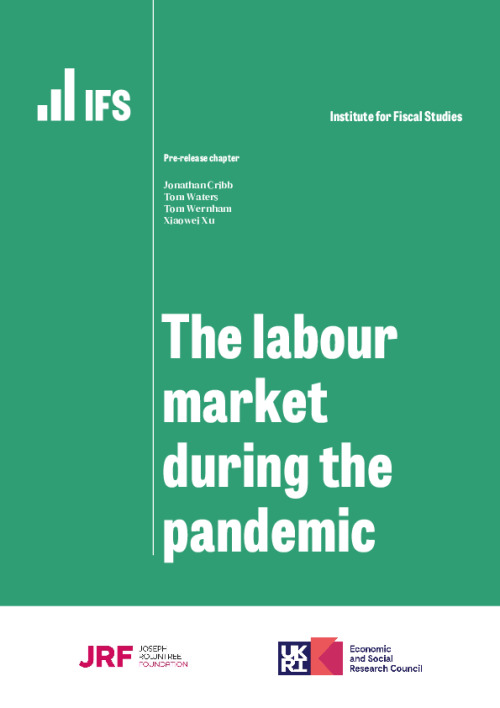In this pre-released chapter from our annual flagship report on living standards, poverty and inequality, we look at the impact the pandemic has had on the labour market.
The labour market has been disrupted in two broad ways during the pandemic. The first, and largest, disruption has been to employment. The temporary or permanent closure of businesses has led to a large number of workers being unable to do their usual job. Many have been put onto the furlough scheme, which at its peak in May 2020 was paying the wages of almost 9 million workers. But others have lost their job entirely and, given the reduced numbers of vacancies available throughout 2020 and into early 2021, they have found it harder to get back into work than they might have if they had been made redundant in more normal circumstances.
Not all changes in employment will have the same effect on household living standards. In particular, those households where, pre-pandemic, only one person was in paid work are much more likely to suffer poverty and financial or material hardship when that one person loses their job, than where there are two earners.
The second dimension of labour market disruption is the earnings of those who have kept their job. Most obviously, the furlough scheme only covers up to 80% of earnings (though employers can choose to top that up). But even those who continue working can be affected too – by cuts to their hours, sluggish wage growth or a lack of job-to-job moves (which are often associated with pay rises).
Key findings
- Although there were large rises in the proportion of people not working at least one hour a week in 2020, there was very little rise in unemployment and economic inactivity (where people have no job at all). By 2021Q1, 1.3 million more adults (aged 19–64) were not working at least an hour a week compared with 2019Q4, whereas only 0.3 million more adults were unemployed or economically inactive. The furlough scheme has kept unemployment from rising sharply during the pandemic.
- Despite the large falls in the number of people working at least an hour a week, the number of households where no one was working has risen only modestly. This is particularly important for 19- to 24-year-olds, many of whom live with their parents. Even excluding full-time students who moved back home when universities and colleges shut, the share of 19- to 24-year-olds who lived with their parents rose from 45% in 2020Q1 to 50% in 2021Q1 – an increase of around 200,000 people. As a result, whilst the share of young adults who were not working rose by 10 percentage points by 2021Q1, the share living in a household where no one is working rose by just 1 percentage point – no more than the general population.
- Looking at the (relatively small) increase in the number of households where no one has a job (i.e. all adults are unemployed or inactive), there are a number of groups where rises are more concerning: single-adult households without children (who by definition do not have a working partner to support them), and Pakistani and Bangladeshi people (who pre-pandemic were particularly likely to be single-earner households). These groups had relatively high levels of poverty before the pandemic. The share of lone parents who were not working also rose sharply, though this reflected an increase in furlough rather than unemployment and inactivity.
- People who continued to work through the pandemic experienced real earnings growth that was fairly similar to the immediate pre-pandemic years, and much higher than in the aftermath of the Great Recession. Real earnings growth has been supported by low measured inflation during the pandemic.
- Average earnings growth during the pandemic has tended to be stronger for public sector workers and for workers with lower levels of education, the latter perhaps in part due to a significant rise in the National Living Wage in 2020. Conversely, there is some evidence that younger workers (aged 19–34) have seen weaker growth in earnings. This may be due to the lack of vacancies: those earlier on in their career are more likely to move employers more regularly and this is often a source of wage growth.












